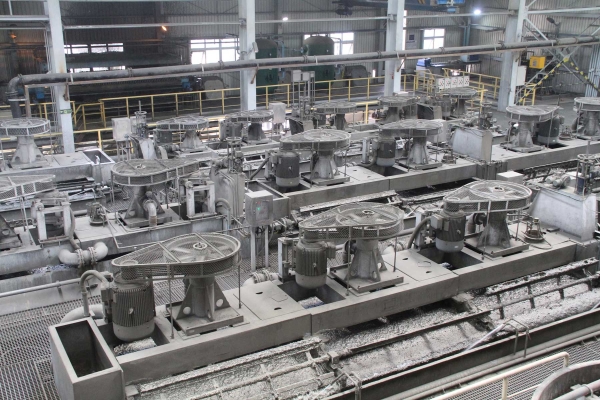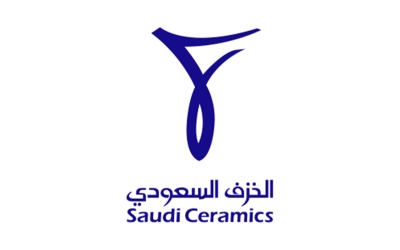

Raw Materials in the Kingdom of Saudi Arabia, or primary materials, are one of the natural resource assets in the Kingdom. Their products take the form of raw materials that enter into many industries as part of the production process, and these materials may be renewable or non-renewable.
The Kingdom benefits from its capabilities in various raw materials and works on exporting some of them and incorporating others into manufacturing industries, which maximizes their returns.
Around 70 percent of the primary materials exported by the Kingdom to various parts of the world are raw materials for petroleum derivatives, while the value of exports from the plastics and chemicals sectors accounts for around 60 percent of the Kingdom’s non-oil exports.
These materials directly impact the growth of global economies, as they are strongly linked to inflation when their prices rise, as occurred during the COVID-19 pandemic, when their prices reached very high levels due to a decline in their production during that period and the increase in transportation costs as a result of the lockdowns experienced by most countries and the decline in transportation and all types of supply chains.
Crude oil production in Saudi Arabia
The Kingdom has worked to maximize the benefits of its various raw materials, foremost among them oil and gas. Saudi Aramco has succeeded in producing crude oil in commercial quantities since 1938 and supplying it to energy markets around the world. That was in 1939, when the first tanker to transport Saudi oil, the D.G. Scofield, docked, and the Founding King, Abdulaziz Bin Abdulrahman Al Saud, personally operated the valve to fill it with the first shipment of Saudi crude oil for export.
The Kingdom possesses vast hydrocarbon materials managed by Saudi Aramco. The company’s proven conventional reserves and crude oil production capacity are substantial. It produces five types of crude oil: Arab Heavy, Arab Medium, Arab Light, Arab Extra Light, and Arab Super Light.
Mineral resources and their growth level in Saudi Arabia
Since its founding, the Kingdom has succeeded in managing its resources in the mining and minerals sector as well, and has efficiently benefited from these resources through various development plans. In the Eighth Development Plan, the mineral resources sector was able to enhance its capabilities in the extraction and utilization of raw materials, in addition to producing related manufactured and semi-manufactured products. The exploitation of raw materials increased from around 237 million t in 2003–2004 to around 325 million t in 2007–2008, with an average annual growth rate of 8.2 percent.
The Kingdom kept pace with developments in operational and production processes in the mineral resources sector, which witnessed growth and diversification in mineral raw material products during the Eighth Development Plan. The quantity of raw materials utilized—estimated at around 325 million t in 2007–2008—contributed to the production of many non-metallic mineral ores and industrial minerals, in addition to precious metals and semi-precious stones, to meet the needs of the Kingdom.
In January 2024, the Kingdom raised its estimate of mineral wealth to SAR9.4 trillion (USD2.5 trillion), compared to the estimate announced in 2016, which at the time was SAR5 trillion. By the end of 2023, it also announced the provision of exploratory incentives valued at around SAR682.5 million (USD182 million).
The total quantities extracted from mineral ores in 2022 were estimated at more than 591,872 thousand t of various mineral ores.
The Deputy Ministry for Mineral Resources at the Ministry of Industry and Mineral Resources supervises mining activities in the Kingdom. It works to encourage investment in the mining sector, provide services and consultations to support this activity, and issue mining licenses and deeds.
Expansion of mining activities in Saudi Arabia
Mining operations expanded as their returns increased and raw materials in the Kingdom were maximized. By the end of May 2024, the total number of valid mining licenses had reached 2,294, covering various industrial mineral ores such as silica sand, gypsum, salt, limestone, clay, pyroclastic basalt (pozzolan), marble, low-grade iron (for cement production), dolomite, feldspar, barite, sandstone, perlite, and pyrophyllite.
Mineral exploration activities in the Kingdom revealed the discovery of no fewer than around 5,300 mineral sites of various types of metallic and non-metallic minerals, rocks, construction materials, ornamental stones, and gemstones. Metallic minerals—such as gold, silver, copper, zinc, and iron—as well as rare and radioactive elements and others, are concentrated in the rocks of the Arabian Shield.
The contribution of the mining and quarrying activity (including crude oil and natural gas) to the gross domestic product (GDP) at constant prices (2010=100) increased to 37.8 percent in 2022, compared to 35.5 percent in 2021. The mining and quarrying activity at constant prices recorded an increase of 16.0 percent in 2022, compared to a decrease of 1.1 percent in 2021.
The Kingdom has taken significant steps toward achieving economic transformation, particularly in the mining sector, through a comprehensive approach based on three phases. The first phase involves mining activities, including surveying and exploration to determine mineral quantities, conducting economic feasibility studies, developing mines, and processing raw materials. The second phase is the stage of intermediate industries, which includes refining and smelting processes to manufacture basic materials such as aluminum alloys and steel billets. The third phase is the stage of manufacturing industries, which includes the production of semi-finished products such as iron and aluminum sheets, and finished products such as pipes and iron rods.
Several initiatives have been implemented in the mining sector, including the Rapid Exploration Programs, which aim to develop promising mineral deposits through the implementation of highly reliable exploration programs. This contributes to increasing investment opportunities and attracting investors. The program is expected to achieve several successes, most notably contributing to an increase in spending and investment in mineral exploration, accelerating and expanding exploration activities, supporting the development of the exploration sector, increasing the proportion of promising investment opportunities for both local and foreign investors, activating the role of small and medium enterprises, and enhancing and developing national competencies in exploration and prospecting activities.
The Saudi Mining Services Company initiative was launched to support the development of mining investments, including support for mining directorates and the enhancement of monitoring and enforcement procedures at licensed mining sites. This will be achieved through the use of advanced monitoring tools and modern technologies, as well as supporting the collection of revenues and fines. The mining sector is expected to benefit from this initiative by raising companies’ compliance with environmental, health, and safety standards in a way that serves workers in the sector and neighboring local communities, and by improving the efficiency of monitoring the exploited resources, which contributes to increasing state revenues.
Raw mineral exports in Saudi Arabia
In 2022, exports of basic metal products and products made from basic metals went primarily to the Republic of India, with a value of SAR4.14 billion; to the United Arab Emirates, with a value of SAR3.04 billion; and to the United States of America, with a value of SAR2.52 billion.
The Kingdom worked on organizing its raw material resources and incorporated that into a number of regulations related to their production and processing. In the Law of Protection and Encouragement of National Industries, issued by Royal Decree and a decision of the Council of Ministers in 1961, Article Five states: exemption of primary raw materials, semi-manufactured materials, and packaging bags, boxes, and cylinders required by industrial establishments from customs duties, provided that no similar and sufficient alternative exists within the Kingdom.
The regulation of the Saudi Export-Import Bank also supported investment operations in raw materials. Article Four of the regulation, issued by a decision of the Council of Ministers in 2020, states: without prejudice to the powers and responsibilities of other government entities, the Bank may, in order to achieve its objectives, carry out the necessary tasks and responsibilities that serve the purposes for which it was established, including financing importers of raw materials with the aim of creating added value and re-exporting.
Incentives for raw material investment in Saudi Arabia
Raw materials in the Kingdom have received significant economic and investment attention from state institutions, as they are natural resources that support economic growth. Accordingly, various leading and vital sectors targeted by the objectives of Saudi Vision 2030 have been empowered through specialized programs and development strategies, resulting in a vast diversity of sectors with attractive competitive advantages and significant investment opportunities, most notably the abundance of raw resources in the Kingdom’s soil.
The attention given to raw materials included the establishment of transportation outlets to global markets. For this purpose, several specialized facilities were created, including King Fahd Industrial Port in Al-Jubail in 1982, which was designed for the import of raw materials required by local industries and the export of industrial products such as petrochemicals, refined petroleum products, chemical fertilizers, and sulfur.
Related quizzes
Related articles

